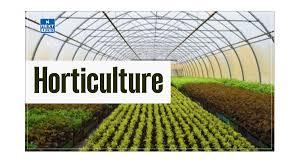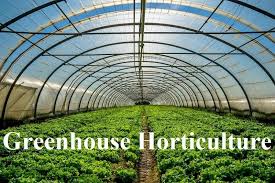How to Start a Horticulture Farming Operation for a Sustainable Income
Horticulture farming is a profitable agricultural venture that involves the cultivation of fruits, vegetables, flowers, herbs, and ornamental plants. With the increasing demand for fresh produce, organic farming, and sustainable agriculture, starting a horticulture farming operation can be a lucrative business. However, success in this field requires careful planning, proper investment, and effective marketing strategies. Below is a step-by-step guide to launching a profitable horticulture farm.
Research and Market Analysis
Before starting your horticulture farming operation, it is crucial to conduct thorough research and market analysis to understand the demand, competition, and profitability of the crops you want to grow.
Identify Target Market
- Assess local and regional demand for horticulture products.
- Identify potential customers, such as supermarkets, grocery stores, restaurants, farmers’ markets, and direct consumers.
- Research organic and specialty produce trends, which can command higher prices.
Study Competitors
- Analyze the strengths and weaknesses of existing horticulture farms.
- Identify gaps in the market where you can introduce unique products.
- Learn about the pricing, packaging, and branding strategies of competitors.
Understand Consumer Preferences
- Survey customers to determine their preferences for organic, pesticide-free, or hydroponically grown produce.
- Look into high-value crops that have increasing demand, such as microgreens, exotic herbs, and medicinal plants.
Choose the Right Crops
Selecting the right crops is essential to ensure high yields and profitability. Some of the most profitable horticultural crops include:
Vegetables:
- Tomatoes
- Bell peppers
- Cucumbers
- Carrots
- Spinach
- Kale
Fruits:
- Strawberries
- Blueberries
- Apples
- Grapes
- Mangoes
Herbs & Medicinal Plants:
- Basil
- Mint
- Rosemary
- Aloe Vera
- Lavender
Ornamental & Flower Plants:
- Roses
- Orchids
- Marigolds
- Sunflowers
- Bonsai plants
Your choice of crops should depend on climate, soil conditions, demand, and profitability.
Secure Land and Infrastructure
The success of a horticulture farm depends on the quality of land, infrastructure, and accessibility to resources.
Selecting the Right Land
- Choose land with fertile soil and good drainage.
- Conduct soil tests to determine nutrient levels and pH balance.
- Ensure access to a reliable water supply.
Infrastructure Requirements
- Greenhouses: Essential for growing crops year-round and protecting plants from extreme weather.
- Irrigation Systems: Drip irrigation and sprinkler systems help in efficient water management.
- Cold Storage Facilities: Keeps produce fresh before transportation and sale.
- Packaging and Processing Unit: Helps in sorting, cleaning, and packaging produce for market.
- Transportation and Logistics: A reliable distribution system ensures smooth delivery of products.
Legal and Business Registration
Setting up a legitimate business ensures credibility and allows access to funding opportunities.
Register Your Farm
- Choose a business structure (sole proprietorship, partnership, or LLC).
- Register your farm with relevant agricultural and business authorities.
- Obtain necessary farming licenses and permits.
Compliance and Certifications
- If growing organic crops, apply for organic certification.
- Obtain Good Agricultural Practices (GAP) certification.
- Adhere to local environmental and health regulations.
Investment and Funding
Starting a horticulture farm requires financial investment for land, seeds, infrastructure, and equipment.
Funding Sources
- Personal savings
- Bank loans and agricultural credit programs
- Government grants and subsidies
- Crowdfunding and investor partnerships
Budget Planning
- Calculate the initial setup costs, including land purchase, equipment, seeds, and labor.
- Estimate operational costs, such as irrigation, fertilizers, pest control, and marketing.
- Develop a financial plan to ensure sustainability and profitability.
Farming Techniques and Best Practices
Using modern farming techniques increases yield and efficiency while reducing costs.
Soil Management
- Use organic manure and compost to improve soil fertility.
- Practice crop rotation to prevent soil depletion.
Irrigation Management
- Implement drip irrigation to conserve water.
- Use rainwater harvesting systems for sustainability.
Pest and Disease Control
- Implement integrated pest management (IPM) to reduce chemical use.
- Use natural pest repellents and biological controls.
Hydroponics and Vertical Farming
- Consider hydroponic farming to grow crops without soil.
- Use vertical farming techniques for space efficiency in urban areas.
Marketing and Customer Acquisition
A strong marketing strategy helps attract customers and increase sales.
Branding Your Farm
- Create a unique farm name and logo.
- Develop a brand that emphasizes sustainability, organic produce, and freshness.
Selling Strategies
- Direct Sales: Sell directly to consumers via farmers’ markets, roadside stands, or farm visits.
- Wholesale Supply: Partner with grocery stores, supermarkets, and restaurants.
- Online Sales: Build an e-commerce website to sell fresh produce and deliver to customers.
- Subscription Boxes: Offer weekly or monthly subscription boxes with fresh fruits and vegetables.
Advertising and Promotion
- Use social media marketing (Facebook, Instagram, Pinterest) to showcase your produce.
- Start a blog or YouTube channel to share farming tips and engage customers.
- Offer discounts and referral programs to attract new buyers.
Scaling Up and Expanding
Once your horticulture farm is running successfully, consider expansion strategies.
Diversify Products
- Introduce value-added products such as dried herbs, jams, juices, and organic fertilizers.
Expand Farmland
- Acquire additional land for large-scale production.
Explore Export Markets
- Research international demand for exotic fruits, vegetables, and flowers.
- Obtain necessary export certifications.
Collaborate with Other Farmers
- Form cooperatives to pool resources and improve bargaining power.
Conclusion
Starting a horticulture farming operation requires strategic planning, investment, and marketing efforts. By choosing high-value crops, implementing sustainable farming techniques, and leveraging digital marketing, you can build a profitable and long-term horticulture business. Stay informed about market trends, adopt innovative farming practices, and maintain quality to attract loyal customers and generate sustainable income.
Would you like additional guidance on specific aspects such as business plans, financial projections, or supplier sourcing?



